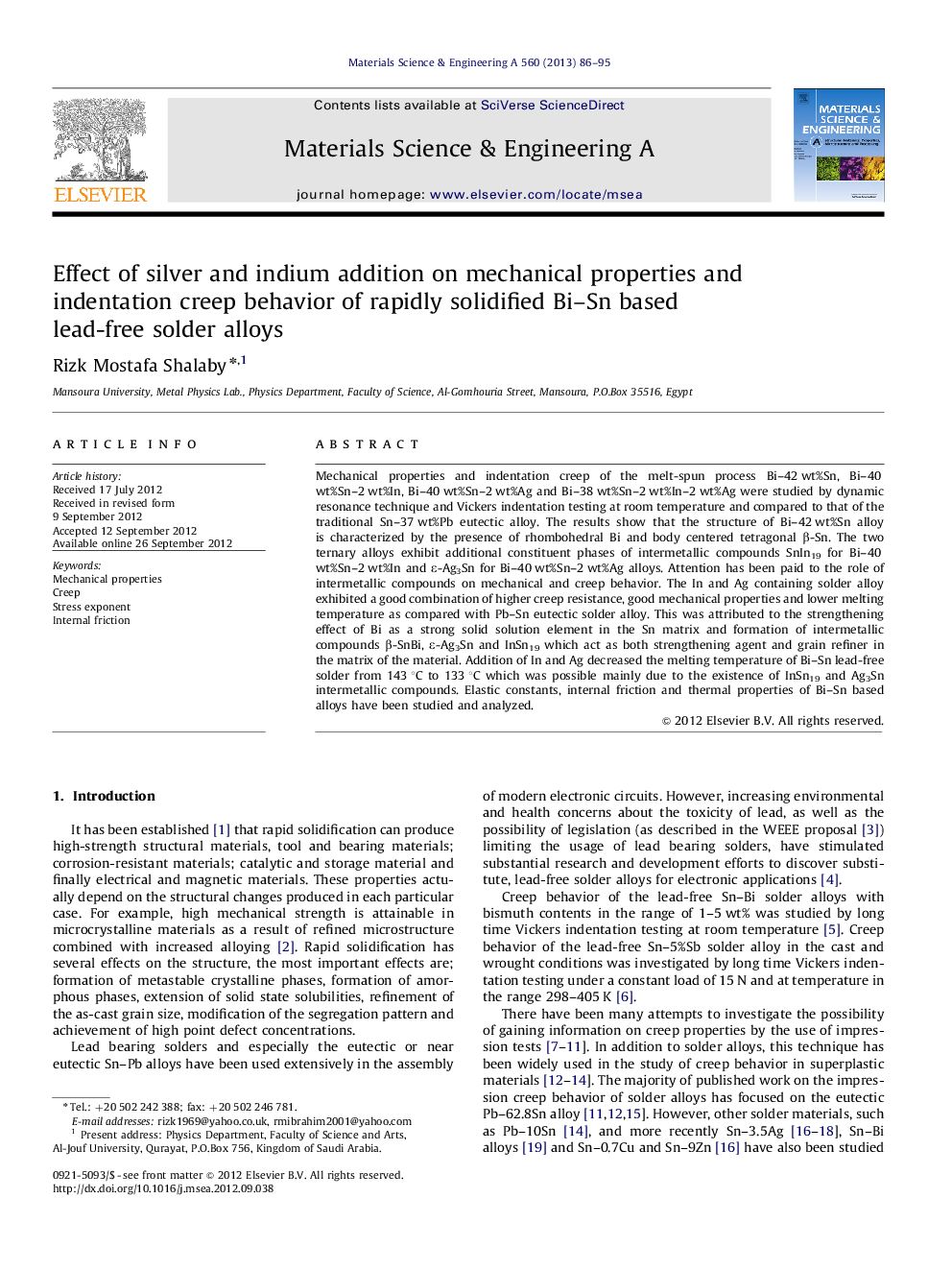| Article ID | Journal | Published Year | Pages | File Type |
|---|---|---|---|---|
| 7983713 | Materials Science and Engineering: A | 2013 | 10 Pages |
Abstract
Mechanical properties and indentation creep of the melt-spun process Bi-42 wt%Sn, Bi-40 wt%Sn-2 wt%In, Bi-40 wt%Sn-2 wt%Ag and Bi-38 wt%Sn-2 wt%In-2 wt%Ag were studied by dynamic resonance technique and Vickers indentation testing at room temperature and compared to that of the traditional Sn-37 wt%Pb eutectic alloy. The results show that the structure of Bi-42 wt%Sn alloy is characterized by the presence of rhombohedral Bi and body centered tetragonal β-Sn. The two ternary alloys exhibit additional constituent phases of intermetallic compounds SnIn19 for Bi-40 wt%Sn-2 wt%In and ε-Ag3Sn for Bi-40 wt%Sn-2 wt%Ag alloys. Attention has been paid to the role of intermetallic compounds on mechanical and creep behavior. The In and Ag containing solder alloy exhibited a good combination of higher creep resistance, good mechanical properties and lower melting temperature as compared with Pb-Sn eutectic solder alloy. This was attributed to the strengthening effect of Bi as a strong solid solution element in the Sn matrix and formation of intermetallic compounds β-SnBi, ε-Ag3Sn and InSn19 which act as both strengthening agent and grain refiner in the matrix of the material. Addition of In and Ag decreased the melting temperature of Bi-Sn lead-free solder from 143 °C to 133 °C which was possible mainly due to the existence of InSn19 and Ag3Sn intermetallic compounds. Elastic constants, internal friction and thermal properties of Bi-Sn based alloys have been studied and analyzed.
Related Topics
Physical Sciences and Engineering
Materials Science
Materials Science (General)
Authors
Rizk Mostafa Shalaby,
